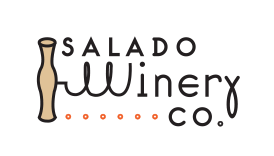The Claw Can Draw
Art Opening Reception, October 21, 5-8 pm
Lonnie Edwards & Friends
Please join us for the largest exhibition of chicken art yet, presented by Lonnie Edwards and his associates. These fingered and feathered friends will entertain you with paintings, photographs, audio and visual presentations, and an art opening reception you will not forget.
Lonnie Edwards, 74, set up his studio on the banks of Salad Creek nearly 40 years ago. Carved from a hillside in the midst of lush shade trees with a view of a meadow that runs down to the creek, the studio has a definite southwest feel. Chickens that Edwards breeds for their colors and their variegated patterns run in and out of the studio all day watching the artist at work.
Edwards earned his art degree at Texas Tech University in 1963 and taught there for five years before moving to Salado in 1971. An artisan who has spent much of his lifetime fashioning objects in metal, Edwards recently took departure from hammering iron and bronze on an anvil to painting in acrylics on canvas using his chickens as his paint brushes. He came up with the idea almost by accident.
“I had always wanted to do chicken art, “Edwards said. “But my idea was to make them the artist, not the subject.”
The Art
The concept of chicken art was born amidst a shower of sparks and clanging of steel at a hot forge as Edwards visited with a newspaper reporter. His comments about one day creating chicken art ended up in print. Gene Street, a Dallas art collector, contacted Edwards immediately to commission 10 works for his restaurant.
Edwards prepares a canvas using a technique first pioneered by Jackson Pollock in the 1950s. Pollock’s abstract expressionism became known as “action painting” because of the interaction between the artist and the medium to create the feel of movement. Edward’s chickens easily put movement into their works! First they leave the impressions of their claws and footprints in the pigment. Then hopping around they transfer all the colors of the rainbow into the pristine, white areas of the canvas as they cluck and cackle their way to neo-impressionist fame. The end result is nature copying art.
The dots, blips and slash marks the birds leave are a type of pointillism, Edwards said. The finished canvas is a hybrid (or hybird). Edwards’ part of the composition is abstract expressionism. The bird’s contribution comes from the neo-impressionist school of art. Edwards appears to be in perfect simpatico with his colleagues. They are, he said, expressing their feelings.
(254) 947-8011

